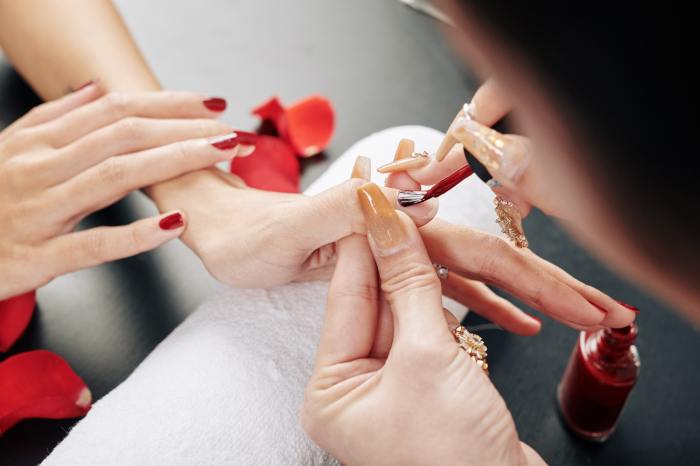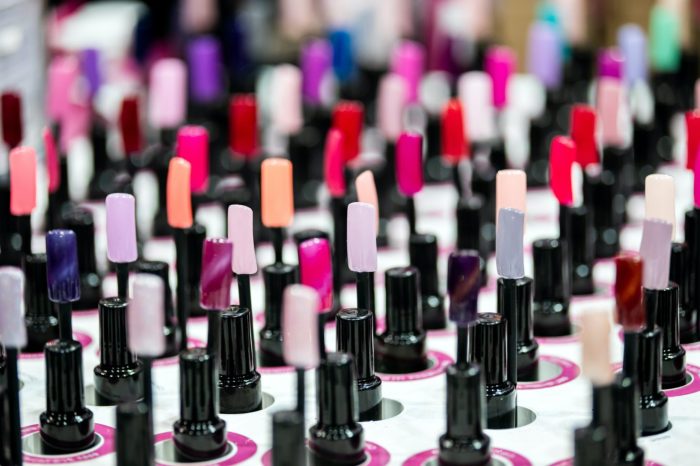How to Fix Nail Polish That Is Dry
Reviving Dried Nail Polish: A Comprehensive Guide: How To Fix Nail Polish That Is Dry
How to fix nail polish that is dry – Dried-out nail polish is a common frustration for many. This guide provides a practical approach to identifying the problem, reviving the polish, and preventing future occurrences. We’ll explore various methods, precautions, and alternative solutions to help you get the most out of your nail polish collection.
Identifying Dry Nail Polish Issues
Dried nail polish manifests in several ways. The polish may thicken, becoming difficult to apply smoothly. It might become clumpy, with uneven texture and separation of pigments. In severe cases, the polish may separate completely, with a distinct layer of solvent separating from the pigment. These issues primarily stem from age, improper storage (exposure to extreme temperatures, direct sunlight, or excessive air), and leaving the bottle open for extended periods.
A newly purchased polish will have a smooth, even consistency, easily flowing from the brush. In contrast, dried-out polish will be thick, possibly clumpy, and often difficult to spread evenly on the nails.
Methods for Reviving Dried Nail Polish, How to fix nail polish that is dry

Source: beautywaymag.com
Several household items can help thin dried nail polish. The effectiveness varies depending on the severity of the drying and the type of polish. Always test a small amount first before adding to the entire bottle.
| Item | Method | Effectiveness | Cautions |
|---|---|---|---|
| Acetone | Add a few drops at a time, shaking vigorously after each addition. | Highly effective, but can damage the polish if overused. | Use in a well-ventilated area. Avoid contact with skin. |
| Nail Polish Thinner | Follow the instructions on the thinner bottle. Generally, add a small amount at a time, shaking well. | Effective for most polishes, less harsh than acetone. | Some thinners may alter the polish color or consistency. |
| Rubbing Alcohol (Isopropyl Alcohol) | Add a few drops, shaking vigorously. | Moderately effective, gentler than acetone. | May not be effective for all polishes. May slightly alter the consistency. |
| Heat | Submerge the bottle in warm (not hot) water for a few minutes. | Mildly effective, best for slightly thickened polish. | Avoid extremely hot water, which can damage the polish. |
Acetone is a potent solvent and is highly effective but can damage the polish’s formula if overused. Nail polish thinner is specifically designed for this purpose and is generally a safer alternative. When adding thinner, always add it drop by drop, shaking vigorously after each addition. Avoid adding too much at once, as this can ruin the polish. Always work in a well-ventilated area.
Preventing Nail Polish from Drying Out
Proper storage is crucial for maintaining nail polish consistency. Storing bottles in a cool, dark place away from direct sunlight and extreme temperatures significantly prolongs their lifespan. Choosing nail polish bottles with tight-fitting lids helps prevent air from entering and causing the polish to dry out. Factors like frequent opening and closing, leaving the lid loose, and storing the polish in excessively hot or cold environments all accelerate the drying process.
Alternative Solutions for Dried Nail Polish

Source: beautywaymag.com
Applying a base coat and top coat can improve the application of slightly thickened polish, providing a smoother finish. However, if the polish is severely dried, clumpy, or separated, discarding it is often the best option. Proper disposal involves emptying the remaining polish into a sealed container designated for hazardous waste, then recycling the bottle.
Visual Aids: Illustrating the Process
A dried nail polish bottle typically shows a thickened, uneven consistency. The polish may appear separated, with a layer of thicker pigment at the bottom and a thinner, possibly oily layer on top. The texture is significantly different from a fresh bottle; it may be gummy or clumpy rather than smooth and fluid. Adding nail polish thinner involves carefully adding a few drops, followed by vigorous shaking.
You’ll hear the sound of the thinner mixing with the polish, and you might notice a slight change in the odor. Visually, the polish will gradually become less thick and more fluid. A successfully revived nail polish bottle will resemble a fresh bottle, with a smooth, even consistency. A discarded bottle will likely contain severely separated, unusable polish.
Quick FAQs
Can I use rubbing alcohol to thin nail polish?
Dealing with thick, dried-out nail polish can be frustrating, but there are solutions! Adding a few drops of nail polish thinner can often revive the consistency. If you’re a fan of bold colors, you might consider a vibrant shade like the boston red nail polish , but remember to thin it out if it gets too thick.
Proper storage, away from direct sunlight and heat, will also help prevent your nail polish from drying out prematurely.
While some suggest rubbing alcohol, it’s generally not recommended as it can affect the polish’s formula and potentially cause it to become cloudy or separate further.
How long does nail polish typically last before drying out?
This depends on storage and the brand, but unopened nail polish generally lasts 1-2 years. Once opened, it can last several months to a year, depending on usage and storage conditions.
What should I do if my nail polish has separated into layers?
Gently roll the bottle between your palms before attempting to thin it. If this doesn’t work, try adding a thinner. If the separation is severe, the polish may be beyond saving.
Is it safe to reuse nail polish after adding thinner?
Yes, provided you use a suitable thinner and follow instructions carefully. Always test a small amount on a surface before applying it to your nails.















